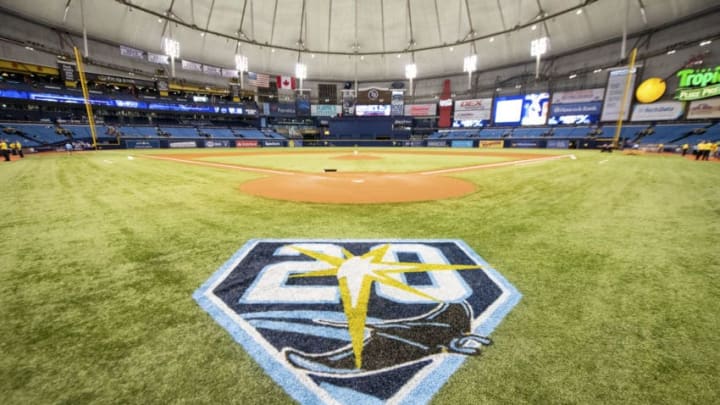The Tampa Bay Rays unveiled their plans for a new ballpark yesterday afternoon.
The ballpark itself looks very modern, with a beautiful, transparent roof and plenty of natural light. And the proposed Ybor City location is closer to the heart of Tampa than the ways-away Tropicana Field. As a fan, the stadium is exciting for many reasons. But there are issues and unanswered questions after the stadium reveal.
First and foremost is the price tag, and this is clearly the biggest concern. The stadium itself would cost $809 million, with the roof making up $245 million of that. Additionally, infrastructure costs would be around $83 million, placing the total cost at $892 million.
When the Rays announced their 2007 iteration of a new ballpark, the ownership group offered to pay $150 million of $450 million total, roughly 33%. If the percentage remains the same, the Rays would be in for about $300 million, with the remaining $600 million left as a question mark.
As reported by Noah Pransky of WTSP, the Rays ownership has presented the new ballpark as a “compelling investment opportunity”, but seemingly doesn’t have any concrete ideas concerning funding for the new stadium. This is a problem. We’ve seen the taxpayers unwillingness to fund a new ballpark in Tampa before. There isn’t much different this time around, and it’s worrisome that the Rays don’t have a real plan for funding the construction.
Is the limited seating capacity an issue?
Second, depending on who you ask, the seating situation is either good or bad. The proposed stadium would have 28,216 seats, with capacity at 30,842. This would make it the smallest ballpark in MLB. The current capacity of the Trop, with the upper deck blocked off, is 31,042. On one hand, the smaller stadium could lead to a more intimate feeling during games. On the other, one of the reasons this team wants a stadium closer to Tampa is to make it more accessible to fans, to allegedly help boost attendance. If that’s the case, why limit seating?
The “limited” seating shouldn’t be an issue, however. The Rays already have one of the lowest attendance figures in baseball. They’re probably never going to draw 40,000 fans per game, regardless of how good the team is. So why not reduce the capacity a bit, put fans closer to the on-field action and limit empty seats? This is a smart decision, even if it may limit gate revenues to an extent.
On the positive side, the stadium itself is very appealing, with a transparent roof and proposed sliding glass windows which allow for plenty of sunshine and fresh air. But being in Tampa, the stadium needs a roof; there’s no getting around it. The roof will force the Rays to put artificial turf in the stadium. It’s do-able for football teams to have grass indoors. But it’s not practical or cost efficient for the Rays to put real grass inside the new stadium.
Next: On the Rays road struggles
The initial photos look great
Overall, I’m a fan of the proposal. The stadium is gorgeous, just look at it…
Tampa Bay’s future ballpark. https://t.co/d1hyjfsnxK
— Tampa Bay Rays (@RaysBaseball) July 10, 2018
#RaysUp pic.twitter.com/jPDlNDD6cs
The roof and windows give the stadium an open, comfortable feeling and at that location, offer great views of the city. If the ballpark can function as suggested, there are limitless opportunities for this ballpark to be integrated into the community.
But the issue is obviously the money. If the Rays are contributing less than 30% of the total cost, we can probably expect this proposal to go the way of the 2007 one. The taxpayers and the public sector have refused to foot the majority portion of a ballpark bill before, and it was significantly less money back then. Unfortunately, unless the Rays can quickly develop a realistic funding plan, we shouldn’t get our hopes up about the new stadium.
